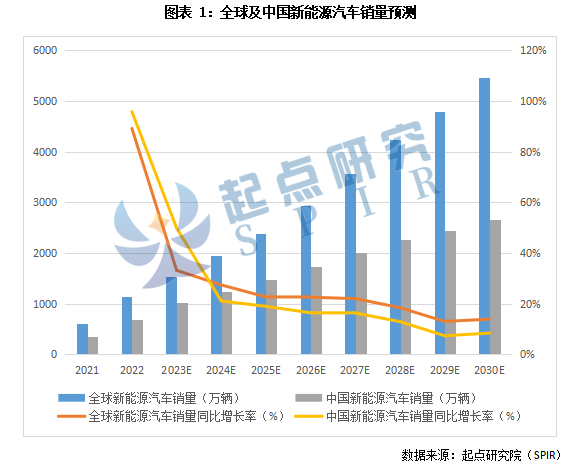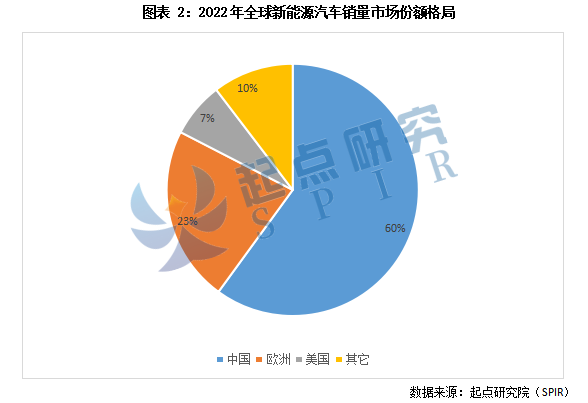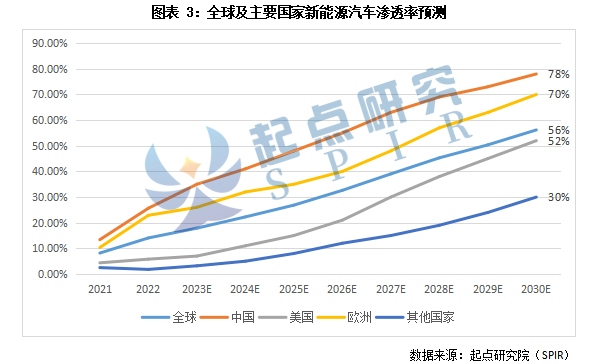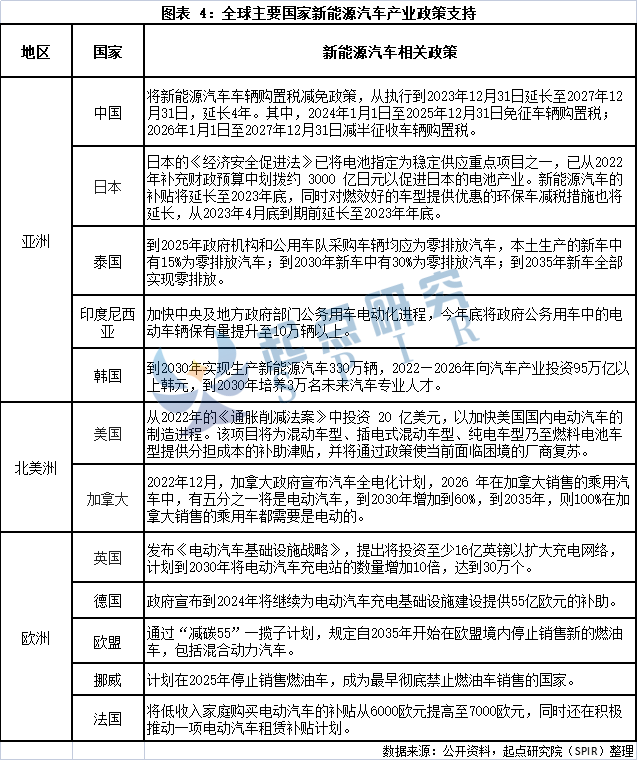 2023-10-08
2023-10-08
In the context of the current global energy crisis and increasingly prominent environmental issues, the development of new energy vehicles has become an important strategic direction for governments and automobile manufacturers. The new energy vehicle industry is facing unprecedented development opportunities.
The new energy vehicle database of Qidian Research Institute (SPIR) shows that global new energy vehicle sales in 2022 will be 11.48 million units, a year-on-year increase of 89.1%, breaking the 10 million mark for the first time. Among them, China's new energy vehicles will continue to grow rapidly in 2022, with sales of 6.89 million units, a year-on-year increase of 95.7%, ranking first in the world for eight consecutive years. Qidian Research Institute (SPIR) predicts that global new energy vehicle sales will reach 54.56 million units by 2030, a year-on-year increase of 13.9%; China's new energy vehicle sales will reach 26.52 million units, a year-on-year increase of 8.4%.

The new energy vehicle market is mainly concentrated in China, the United States, and Europe. China is the largest country in the world's new energy vehicle market. The government has introduced a series of policies, such as car purchase subsidies, free parking, and free charging, to promote the development of new energy vehicles. . In 2022, China's new energy vehicle sales will rank first in the world with a 60% market share, European new energy vehicle sales will rank second in the world with a 10% market share, and US new energy vehicle sales will rank third in the world with a 7% market share.

As the world accelerates the promotion of green and low-carbon development, the penetration rate of new energy vehicles is rising rapidly. The new energy vehicle database of Qidian Research Institute (SPIR) shows that the global penetration rate of new energy vehicles in 2022 is 14%, of which China’s new energy vehicle penetration rate is 26%, Europe’s new energy vehicle penetration rate is 23%, and the United States’ new energy vehicle penetration rate is 26%. The penetration rate of new energy vehicles in other countries is 2%. Qidian Research Institute (SPIR) predicts that by 2030, the global new energy vehicle penetration rate will be 56%, of which China's new energy vehicle penetration rate will be 78%, Europe's new energy vehicle penetration rate will be 70%, and the United States' new energy vehicle penetration rate will be 52%. ;The penetration rate of new energy vehicles in other countries is 30%.

China's new energy vehicle industry leads global development. Europe, the United States, Japan and South Korea are also gradually increasing their efforts in new energy vehicles. The penetration rate of global new energy vehicles will increase year by year, and it is a general trend for new energy vehicles to gradually replace traditional fuel vehicles.
The rapid development of new energy vehicles has benefited from a variety of factors, among which continued policy support from various countries is the main factor. Under the goals of global carbon neutrality and carbon peaking, countries around the world are actively implementing policies to support the promotion of green transportation. Countries have increased their support for the new energy vehicle industry and launched fierce competition in this field. In recent years, China has provided policy support in terms of car purchase subsidies, charging facility construction, and technical support. Developed countries such as Japan, South Korea, Europe and the United States have also continuously introduced relevant policies to promote the development of new energy vehicles.

The development of the global new energy automobile industry has entered the fast lane, with new products and new technologies accelerating the research and development and application, and technological innovation driving the continuous upgrading of the industry. As the global automobile industry accelerates towards electrification, intelligence, and connectivity, it not only requires cross-border integration with new technologies, new materials, electronic power, advanced manufacturing and other fields, but also requires countries to strengthen technological innovation cooperation and promote industry Coordinated development of chain and supply chain.
Source: Starting Point Research
Statement: The above content is reproduced from other platforms. The copyright belongs to the original author. If there is any infringement, please contact us!




